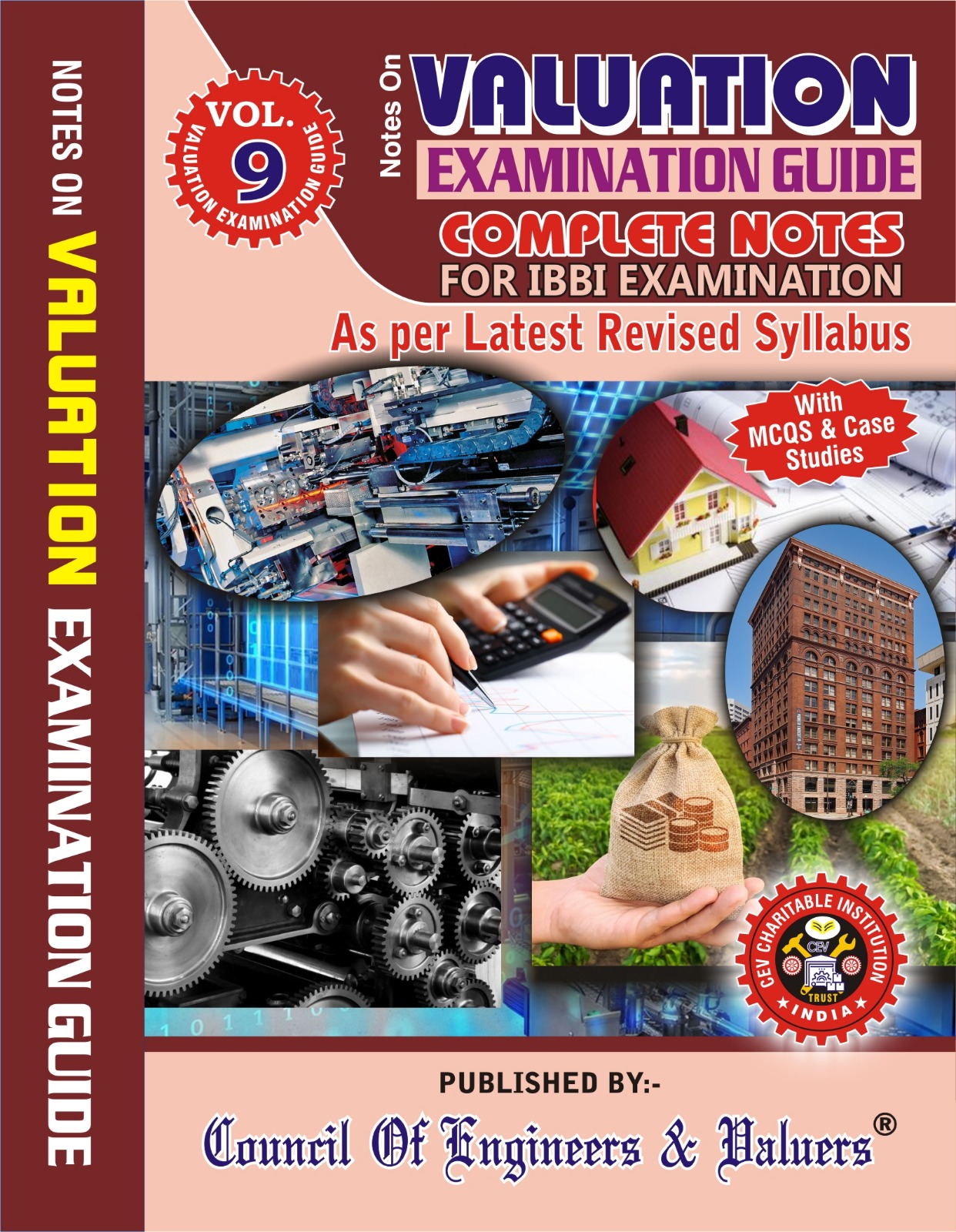RUMALI VATANI IN LAND DIVISION: A CRUCIAL FACTOR IN PROPERTY VALUATION
By Er. Sundeep Bansal, Real Estate Analyst & Valuation Expert
The land tenure system in India, especially in Maharashtra, is a complex interplay of historical grants, socio-economic purpose, legal reforms, and administrative classification. Among the various forms of tenure, Rumali Vatani (Inam/Vatan Lands) represents a class of land grants made historically in recognition of service to the state or community. These lands, once granted as rewards for loyal service or social utility, now present critical challenges in land valuation and property division. For valuers, surveyors, and legal practitioners, understanding their intricacies is essential.
What is Rumali Vatani?
Historically, Rumali Vatani refers to lands granted by rulers without monetary consideration, typically in recognition of military, civil, or religious service. Such lands were not privately owned in the conventional sense but were held with certain service obligations and restrictions on transfer or partition.
They fall under the broader umbrella of Inam (gifted) or Vatan (hereditary service) lands and were regulated under specific laws post-independence to integrate them into the state revenue framework.
Classification and Evolution
Post-British codification and further Indian legislation, these lands were categorized into multiple types:
-
Government Service Vatans – Patil, Kulkarni, Khots, etc.
-
Community Service Vatans – Gurav, Joshi, Lohar, Chambhar, etc.
-
Non-useful Vatans – Artisan-based occupations like Sonar, Shimpi, etc.
With various abolition acts from 1950 onwards, these lands were “resumed” by the state and regranted under ‘Bhogwatdar Class-II’ status, often with strict non-transfer clauses and subject to specific conditions.
Rumali Vatani and Land Division: Challenges for Valuers
Valuing and dividing Rumali Vatani lands is distinct due to the restrictions and legal obligations attached to them. Here’s how they affect land division:
1. Legal Constraints on Partition and Transfer
-
Many Rumali lands cannot be transferred without prior government approval, especially under Class-II occupancy.
-
In some cases, lands may not be divisible at all unless converted to Class-I occupancy upon payment of a premium (typically 50% of market value).
2. Effect of ‘Bhogwatdar Class-II’ Condition
-
This clause restricts the use to agricultural purposes.
-
Sale for non-agricultural use invites penalty and premium payment to the government, often causing disputes in partition or sale.
3. Regrant and Unearned Income
-
For reclassification, the landholder must pay “unearned income” – the difference between market value and government-granted value.
-
Valuers must correctly ascertain the current market value, and calculate 50% of this as the premium to convert occupancy class.
Procedure for Reclassification and Sale
If a landholder wishes to convert Class-II land to Class-I for freehold use or to enable division:
-
Obtain valuation of the land as per ready reckoner rates or actual market comparison.
-
Approach the Tehsildar to issue a chalani (payment notice).
-
On payment of the 50% premium, the occupancy may be upgraded, enabling legal division or sale.
This process must be documented during land valuation and division proposals.
Valuer’s Role in Rumali Vatani
As a valuer or consultant:
-
Verify land title and class in 7/12 extracts, village forms no. 2 and 3, and Land Alienation Registers.
-
Check for regrant orders or government resolutions, especially post-2002 modifications that liberalized sales under certain conditions.
-
Calculate applicable premium where occupancy conversion is sought.
-
Report encumbrances, restrictions, or potential litigation risks arising due to Vatan status.
Key Takeaways
-
Rumali Vatani lands are legacy grants governed by intricate laws.
-
Their valuation and divisibility are subject to legal limitations, not just market parameters.
-
Class-II restrictions, regrant conditions, and unearned income premiums are central to understanding their transfer or division.
-
Valuers must provide clear, legally grounded reports to guide landholders, courts, and authorities in making informed decisions.
Final Note
As land reforms evolve, many restrictions are being eased, but vigilance, due diligence, and up-to-date legal understanding are critical. Rumali Vatani may be rooted in tradition, but its modern interpretation demands the sharpest tools of valuation, law, and local governance expertise.
For further reading:
-
Maharashtra Land Revenue Code, 1966
-
Bombay Paragana and Kulkarni Watans (Abolition) Act, 1950
-
GR dated 10.3.2000 (Watan consolidation guidelines)
-
Maharashtra Act No. 21 of 2002 (Amendments to Inam/Watan laws)
In the intricate world of land valuation and division, the term “Rumali Vatani” holds significant importance, especially in parts of Gujarat and other regions with traditional land tenure systems. Often misunderstood or overlooked in modern valuation processes, Rumali Vatani plays a pivotal role in determining the rightful share and valuation of ancestral property during partition.
What Is Rumali Vatani?
“Rumali Vatani” (sometimes spelled Roomali Vatani) refers to a traditional form of undivided shareholding in ancestral property. Unlike demarcated plots with clear boundaries, Rumali Vatani signifies a fractional ownership in a larger land parcel that has not yet been physically divided among co-owners.
The term “Rumali” metaphorically denotes a handkerchief, symbolizing a loose, undivided, and shared interest in the property—much like a handkerchief held collectively at its corners. Until a formal partition (also known as ‘Batwara’) takes place, all Vatandars (shareholders) enjoy equal, undivided access to the entire parcel, though their legal interests may vary by proportion.
Legal and Valuation Implications
From a valuation and legal title perspective, Rumali Vatani introduces several complexities:
-
Undivided Nature: Since the land has not been physically partitioned, individual owners do not hold a specific piece of land. This makes valuation subjective and dependent on broader considerations such as location, usage, and historical occupation.
-
Marketability: Properties under Rumali Vatani are often less marketable due to unclear boundaries and ownership rights. This affects their fair market value, often requiring a discount in comparative valuation.
-
Litigation Risk: Undivided land shares frequently lead to ownership disputes, especially when the land appreciates or urban development increases pressure for sale or partition.
-
Mutation Records: Revenue records may reflect shared ownership but not physical possession. This creates challenges in determining compensatory valuation during acquisition or infrastructure development.
-
Partition Requirement: For effective utilization, sale, or development, the Rumali Vatani land often requires a formal partition through legal or revenue authorities. The process involves surveying, mutual agreement, or court adjudication, which can be time-consuming.
Role in Valuation Practice
For valuation professionals, understanding Rumali Vatani is critical when:
-
Conducting ancestral property assessments;
-
Estimating compensation for land acquisition;
-
Advising on land development feasibility;
-
Preparing estate or succession planning reports.
Key Takeaway:
In India’s evolving real estate landscape, the nuances of traditional landholding systems like Rumali Vatani must be fully understood by valuers, lawyers, and developers alike. Accurate valuation of such properties requires not only market knowledge but also a deep understanding of local customs, legal precedents, and historical ownership patterns.
As urbanization accelerates and ancestral lands become ripe for development, clarifying and resolving Rumali Vatani interests will be essential for unlocking the true value of such properties.
For valuation practitioners, awareness and documentation are key. Incorporating local knowledge, legal frameworks, and accurate revenue records is indispensable when dealing with Rumali Vatani in any land division process.
RUMALI VATANI IN LAND DIVISION PROCESS
Saturday Brain Storming Thought (278) 07/06/2025
Rumali Vatani likely refers to a dispute or disagreement related to the division of property, specifically in the context of land. In India, when land is divided, it often involves navigating legal processes to ensure fair distribution and ownership among co-owners
Understanding Land Division Process
1) Mutual Agreement
Ideally, all co-owners should agree on how the land will be divided
2) Partition Deed
A legal document, drafted by a lawyer or legal expert, outlines the division of the property
3) Legal Process
If there is disagreement, a partition suit can be filed in court and the court will determine the division
4) Partition by Sale
In some cases, if physical division is not possible, the court may order the sale of the property, and the proceeds will be distributed among the owners
5) Registration
The partition deed needs to be registered with the relevant authority to make the division legally binding on all co-owners
Key points for Rumali Vatani
1) Rumali Vatani highlights a potential issue in land division
2) Rumali Vatani process involves a combination of agreement among co-owners
3) Legal documentation (partition deed)
4) Potentially court intervention if there is a dispute among co-owners
5) Laws in Maharashtra, like the Maharashtra Land Revenue (Partition of Holdings) Rules, 1967, Govern the land division
Steps to Divide a Plot of Land
1) Assess the land and evaluate the market
Determine the size, shape and zoning of the land, and assess the current housing market and demand for different plot sizes
2) Choose a Division Method
Consider whether you want to divide the land based on size, by dividing a point or by drawing a line
3) Hire a Licensed Surveyor
A surveyor will accurately measure and map the land, creating a detailed drawing of the proposed division
4) Design the Subdivision
Create a layout plan that outlines new plot boundaries and consider access roads, utilities and other infrastructure
5) Obtain Necessary Approvals
Submit the subdivision plan to the relevant government authorities (local councils or municipality) for approval
This may involve planning permits and other necessary documentation
6) Create a Partition Deed
If multiple co-owners are involved a partition deed should be created to formally outline the division of the property and assign specific shares to each owner
7) Register the Partition Deed
The partition deed must be registered with the local sub-registrars office to ensure its legal validity
8) Finalize the Division and Transfer of Property
Once approvals are obtained and the deed is registered, the property division is finalized and each co-owner takes possession of their respective share
Key Considerations for Land Division
1) Legal requirements
Ensure that you understand the local laws and regulations regarding land subdivision, as these can vary
2) Zoning Regulations
Check if the proposed division compiles with zoning regulations, as certain plot sizes or configurations may be restricted
3) Access and Utilities
Ensure that each new plot has adequate access to roads and essential utilities like water and electricity
4) Co-owner Agreement
If multiple co-owners are involved, ensure there is a clear agreement on the division of the property and its assets
“रुमली वाटणी” (Rumi Vatni) म्हणजे जमिनीचे वाटप किंवा विभाजन करण्यासाठी वापरलेली पद्धत
या पद्धतीत, जमिनीचे वाटप किंवा विभाजन करण्यासाठी कोणताही अधिकृत किंवा कायद्याने मान्य केलेला करार नसतो.
अनेकदा, ही पद्धत कुटुंबीयांमध्ये किंवा शेजारील लोकांमध्ये जमिनीचे वाटप करण्यासाठी वापरली जाते.
वाटणी (Vatni)
जमिनीचे वाटप करणे म्हणजे तिच्या भागांचे विभाजन करणे आणि प्रत्येक व्यक्तीला त्याचा हिस्सा देणे.
रुमली वाटणी (Rumi Vatni)
या पद्धतीने, जमिनीचे विभाजन कागदोपत्री किंवा अधिकृतपणे न करता, तोंडी किंवा पारंपरिक पद्धतीने केले जाते.
उदाहरण
कुटुंबातील सदस्य जमिनीचे वाटप करण्यासाठी एकत्र येतात आणि त्यांच्यात जमिनीचे विभाजन करतात.
या विभाजनासाठी कोणताही अधिकृत कागदपत्र किंवा करार आवश्यक नसतो.
कायदेशीरदृष्ट्या रुमली वाटणी अधिकृत नसली तरी, ती अनेकदा कुटुंबांमध्ये किंवा शेजारील लोकांमध्ये जमिनीचे वाटप करण्यासाठी वापरली जाते.
अधिकार
रुमली वाटणीने जमीन वाटप केल्यास, प्रत्येक व्यक्तीला स्वतःच्या भागावर मालकी मिळवण्याचा अधिकार असतो, परंतु तो अधिकार अधिकृत नसतो.
•वाटणीपत्र (Vatni Patra)
जमिनीचे वाटप अधिकृत करण्यासाठी, वाटणीपत्र तयार केले जाते, ज्यात जमिनीचे विभाजन आणि प्रत्येक व्यक्तीचा हिस्सा नमूद केलेला असतो.
जमिनीचे वाटप किंवा वाटणी (vatni) करण्याच्या विविध पद्धती आहेत, ज्यात रुमली वाटणी (Rumi Vatni) देखील एक आहे.
“रुमली वाटणी” म्हणजे जमिनीचे वाटप किंवा विभाजन करण्याची एक पारंपरिक किंवा तोंडी पद्धत आहे, जी अनेकदा कुटुंबांमध्ये किंवा शेजारील लोकांमध्ये वापरली जाते.
COMPILED BY:-

Er. Avinash Kulkarni
9822011051
Chartered Engineer, Govt Regd Valuer, IBBI Regd Valuer



